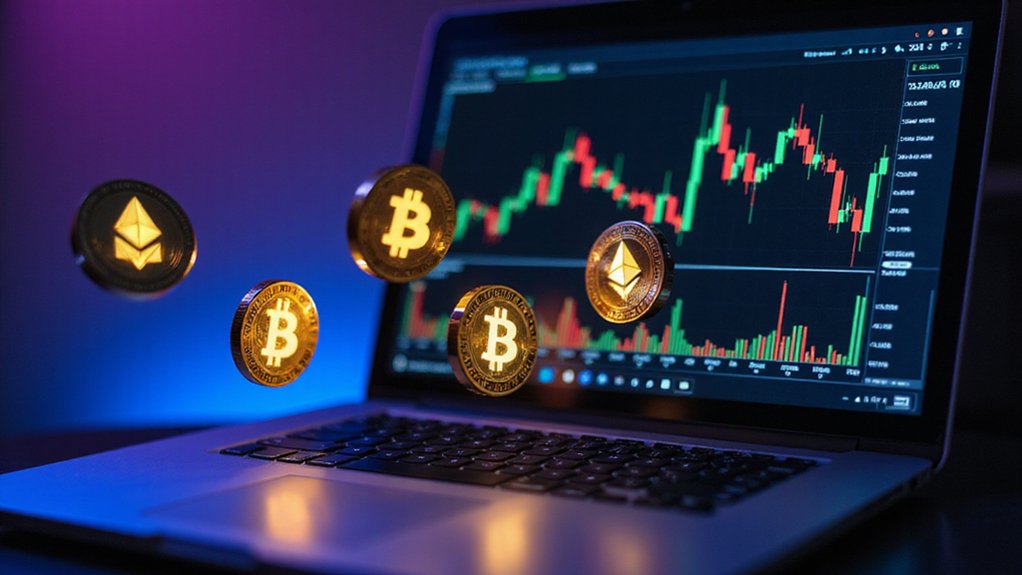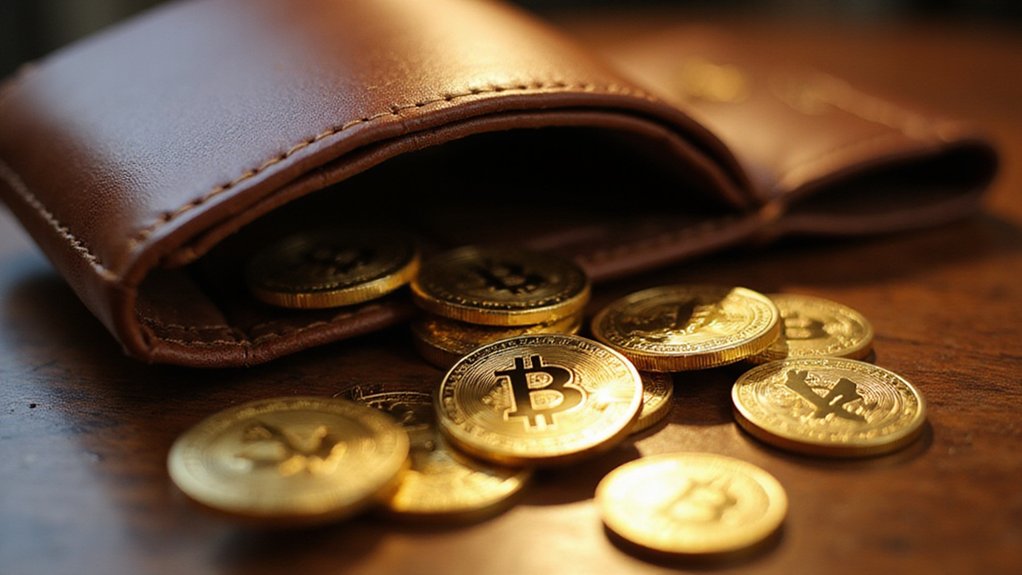Circle emerged from Bitcoin’s Wild West era to become the stablecoin sector’s regulatory darling, co-founding USD Coin (USDC) with Coinbase in 2018 before assuming full control in 2023. The company transformed from a consumer payment app into critical infrastructure for decentralized finance, securing early BitLicense approval and forging partnerships with traditional giants like Visa and Sony. While competitors courted controversy, Circle pursued compliance—a strategy that positioned it for institutional adoption and ongoing IPO preparations, though deeper complexities warrant further examination.

While most cryptocurrency companies have zigzagged through regulatory minefields with the grace of a blindfolded bull in a china shop, Circle Internet Financial has pursued a decidedly different strategy—one that prioritizes compliance over chaos and institutional trust over rebellious posturing.
Founded in 2013 by Jeremy Allaire and Sean Neville with $9 million in venture funding, Circle began as a Bitcoin-focused payment company but quickly distinguished itself through an almost obsessive dedication to regulatory compliance. The Boston-based firm became the first recipient of New York’s coveted BitLicense in 2015, followed by securing the UK’s first virtual currency license in 2016—achievements that positioned Circle as the crypto industry’s reluctant adult in the room.
Circle’s evolution reflects the broader maturation of digital assets. Initially offering Bitcoin trading through CirclePay, the company pivoted dramatically by 2019, discontinuing its wallet and trading features while selling its digital asset platform to Voyager Digital in 2020. This strategic retreat from retail trading coincided with Circle’s most significant contribution to the crypto ecosystem: the USD Coin (USDC).
Circle’s strategic pivot from retail trading to stablecoin infrastructure exemplifies the crypto industry’s evolution from speculation to institutional utility.
Co-founded with Coinbase through the Centre consortium in 2018, USDC represents Circle’s masterpiece—a dollar-pegged stablecoin that allows seamless conversion between fiat currency and cryptocurrency tokens. Following the consortium’s closure in 2023, Circle assumed full governance of USDC, cementing its position as a critical infrastructure provider in decentralized finance and crypto payments. Unlike traditional currencies that require government backing, USDC operates through blockchain technology to maintain its digital form and verify transactions without central authority control.
The company’s partnership strategy reveals calculated ambition. Collaborations with Visa in 2020 enabled businesses to spend USDC wherever Visa is accepted, while the 2024 Sony partnership integrated USDC into Sony’s Soneium blockchain platform—moves that blur the lines between traditional and digital payments.
Circle’s regulatory-first approach has proven prescient as the industry faces increasing scrutiny. While competitors navigate enforcement actions and regulatory uncertainty, Circle’s early compliance investments have facilitated mainstream adoption and institutional trust. The company’s commitment to regulatory excellence extends globally, as evidenced by its operation across 49 U.S. states plus Puerto Rico and the District of Columbia. The recent GENIUS Act establishes a comprehensive regulatory framework for payment stablecoins, requiring issuers to maintain full 1:1 reserves in highly liquid assets and comply with strict transparency standards.
The company’s ongoing IPO registration process—following a failed SPAC merger attempt—demonstrates its commitment to transparency and public market accountability.
Today, Circle stands as a symbol to the proposition that regulatory compliance and innovation need not be mutually exclusive in the often-chaotic world of cryptocurrency.
Frequently Asked Questions
What Are the Transaction Fees When Using Circle Crypto Services?
Circle’s Paymaster charges a 10% surcharge on actual gas costs when users pay transaction fees with USDC instead of native blockchain tokens—though this fee remains waived until June 2025.
Traditional Circle services typically involve standard blockchain gas fees denominated in native tokens (ETH, etc.), which fluctuate based on network congestion.
The Paymaster fundamentally offers convenience at a premium, converting USDC internally while users avoid juggling multiple cryptocurrencies for fees.
How Long Does It Take to Complete a Circle Crypto Transaction?
Circle crypto transaction settlement times have undergone a remarkable transformation with their Cross-Chain Transfer Protocol V2 (CCTP V2), reducing cross-chain USDC transfers from the previously sluggish 13-19 minutes to mere seconds.
This dramatic improvement stems from upgraded smart contracts and APIs that streamline blockchain confirmations.
While traditional Ethereum mainnet transactions still require approximately six minutes for thirty confirmations, Circle’s protocol optimization demonstrates how institutional-grade infrastructure can genuinely accelerate settlement efficiency.
Which Countries and Regions Support Circle Crypto Platform Access?
Circle’s platform spans over 30 countries across Asia-Pacific (including Japan, South Korea, Singapore), extensive European coverage from Germany to microstates like Monaco, Middle Eastern markets (UAE, Saudi Arabia, Israel), and African nations (Kenya, Ghana, Egypt).
Remarkably absent? Major economies like India and China remain “future expansion” targets—a curious oversight given Asia-Pacific’s commanding 29% share of global digital currency volume, suggesting regulatory complexities trump market opportunity.
What Customer Support Options Are Available for Circle Crypto Users?
Circle offers primarily digital support through their dedicated Support Center, featuring extensive FAQs, guides, and developer documentation.
Users can submit inquiries via the official website’s “Contact Us” page, while developers access specialized APIs and SDK resources.
The platform emphasizes self-service tools operating 24/7 across 185+ countries, supporting regulatory compliance and business partnerships through programs like Circle Alliance—though one might question whether this digital-first approach truly satisfies complex user needs.
How Does Circle Crypto Compare to Other Cryptocurrency Exchange Platforms?
Circle operates fundamentally differently from traditional cryptocurrency exchanges, functioning as financial infrastructure rather than a trading marketplace.
While exchanges facilitate multi-asset trading between users, Circle focuses on stablecoin issuance and payment solutions through USDC.
Their Cross-Chain Transfer Protocol and Programmable Wallets target developers building financial applications, not retail traders seeking speculative opportunities.
Circle’s regulatory compliance and 100% reserves contrast sharply with exchange liquidity pools’ inherent counterparty risks.









